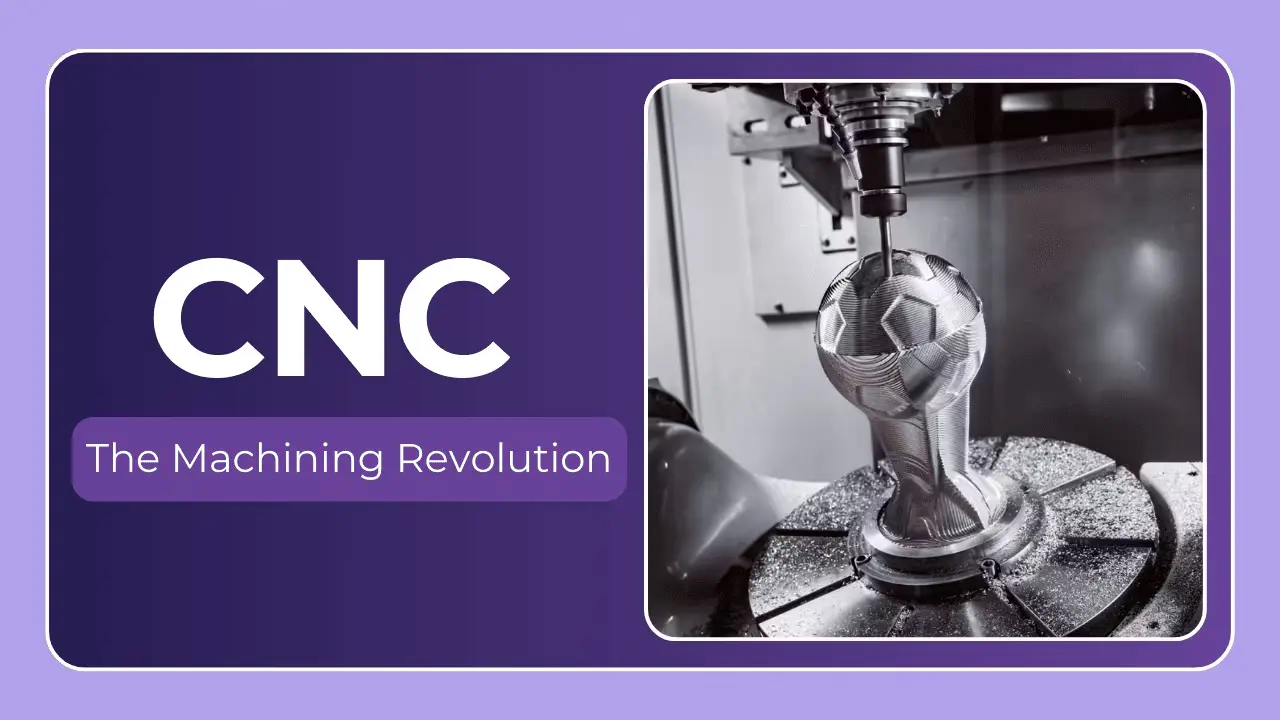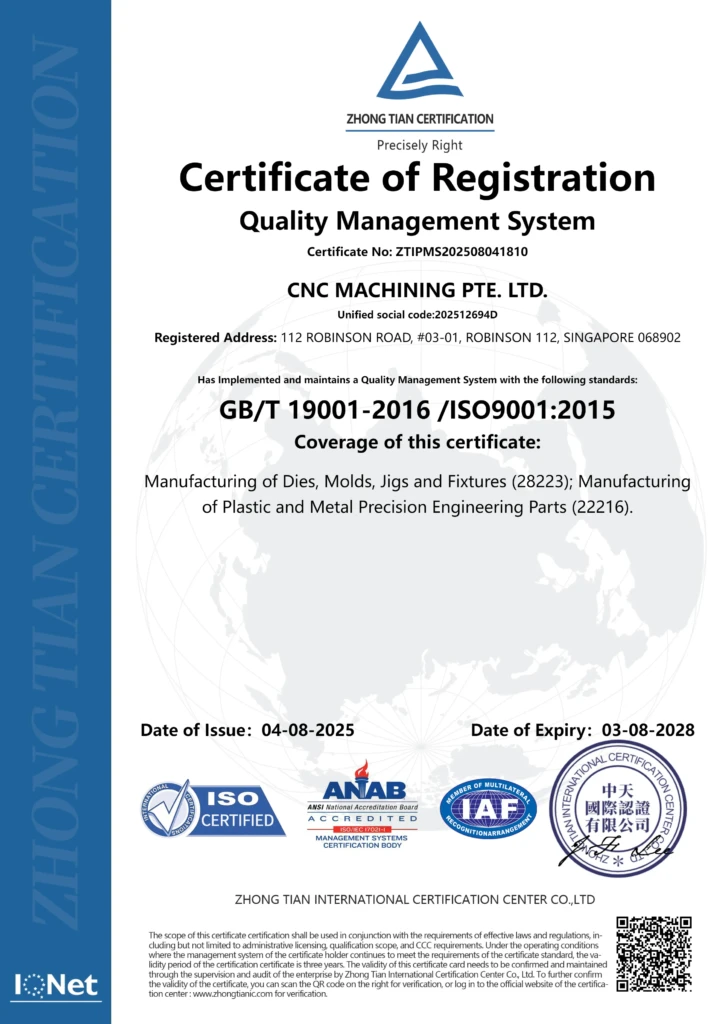Navigating the World of Small Batch CNC Machining: A Comprehensive Guide
In today’s dynamic manufacturing landscape, the ability to rapidly prototype, bridge gaps in production, and fulfill niche orders is paramount. This is where small batch CNC machining shines. Unlike mass production, which prioritizes economies of scale, small batch machining offers flexibility, customization, and speed for projects ranging from a handful of parts to a few hundred. If you’re involved in product development, engineering, or require specialized components, understanding the nuances of small batch CNC machining is crucial. This guide, brought to you from a perspective deeply rooted in precision manufacturing (like the capabilities of CNC MACHINING PTE. LTD in Singapore – featuring advanced five-axis capabilities and comprehensive post-processing), will walk you through everything you need to know.
What is Small Batch CNC Machining?
First, let’s define our terms. Small batch machining generally refers to production runs of 1-200 parts, though the specific range can vary depending on the complexity of the part and the manufacturer. It leverages Computer Numerical Control (CNC) technology – automated cutting processes guided by precise digital instructions – to create components with tight tolerances and consistent quality.
The key differentiating factors compared to other methods include:
- Flexibility: Easily adapt designs and materials between runs.
- Speed: Faster turnaround times compared to traditional tooling methods for limited quantities.
- Precision: CNC machining guarantees high accuracy and repeatability.
- Cost-Effectiveness (for low volumes): Avoids the high upfront costs of dedicated tooling required for mass production.
Why Choose Small Batch CNC Machining? – The Applications
The applications of small batch CNC machining are wide-ranging. Here are some common scenarios:
- Prototyping: Quickly create functional prototypes to test designs and refine concepts. This is a critical step in product development, allowing for iterative improvements before committing to large-scale production.
- Bridge Manufacturing: Temporarily fill production gaps while waiting for long-lead-time tooling or for the ramp-up of mass production.
- Custom Parts: Manufacture unique components for specialized equipment, repairs, or limited-run products.
- Low-Volume Production: Producing finished products where demand doesn’t justify large-scale manufacturing. Think aerospace components, medical devices, or specialized scientific instruments.
- Jigs and Fixtures: Creating custom holding tools for assembly or inspection that improve efficiency and accuracy.
Materials Commonly Machined in Small Batches
CNC machining can handle a vast array of materials. Here’s a breakdown of some popular choices, and considerations for small batch production:
| Material | Common Applications | Machinability (1-5, 5=Easy) | Typical Small Batch Costs (relative) |
|---|---|---|---|
| Aluminum (6061, 7075) | Aerospace, Automotive, Electronics | 4 | Low-Medium |
| Stainless Steel (304, 316) | Medical, Food Processing, Marine | 2-3 | Medium |
| Titanium (Grade 5) | Aerospace, Medical Implants | 2 | High |
| Brass | Plumbing, Electrical Components | 5 | Low |
| Copper | Electrical Conductors, Heat Sinks | 3-4 | Medium |
| Plastics (Delrin, Nylon, Acrylic) | Housings, Prototypes, Custom Parts | 4-5 | Low |
| Tool Steel | Dies, Molds, Cutting Tools | 1-2 | High |
Note: Costs are relative and depend on complexity, quantity, and features. Titanium and Tool Steel necessitate specialized tooling and slower machining speeds, driving up costs.
The CNC Machining Process – A Breakdown
Understanding the steps involved helps you prepare your designs and manage expectations:
- Design and CAD Modeling: The process starts with a detailed 3D model (typically in a format like .STEP, .IGES, or SolidWorks files). Accuracy and clarity are paramount.
- CAM Programming: Computer-Aided Manufacturing (CAM) software translates the 3D model into specific machine instructions (G-code) that dictate the toolpaths. This is where material removal strategies, cutting speeds, and feed rates are defined.
- Material Selection: You’ll work with the machinist to choose the most appropriate material for your application, considering its properties (strength, corrosion resistance, weight, etc.) and cost.
- Setup: The raw material is securely fixtured on the CNC machine. This involves clamps, vises, or custom fixtures to hold the part during machining.
- Machining: The CNC machine precisely removes material, following the programmed toolpaths. This can involve milling, turning, drilling, tapping, and more.
- Deburring & Finishing: After machining, parts often require deburring to remove sharp edges. Further finishing options, like anodizing, polishing, passivation, or coating, may be applied to enhance appearance, corrosion resistance, or functionality. (CNC MACHINING PTE. LTD excels in providing these one-stop post-processing services).
- Quality Control: Rigorous inspection using CMMs (Coordinate Measuring Machines), calipers, and other precision instruments ensures the parts meet specified tolerances.
Design for Manufacturability (DFM) – Key Considerations
Optimizing your design for CNC machining can significantly impact cost and lead time. Here’s what to keep in mind:
- Minimize Complex Geometry: Intricate designs with deep pockets or thin walls can be challenging and expensive to machine.
- Standard Tool Access: Ensure that cutting tools can reach all required areas without collisions.
- Tolerance Specification: Specify realistic tolerances. Tighter tolerances increase machining time and cost.
- Material Selection Impact: Consider how the material’s properties influence machinability.
- Corner Radii: Avoid sharp internal corners, as they can be difficult to machine accurately. Adding small radii improves tool life and surface finish.
- Hole Sizes & Depths: Communicate hole geometries and depths accurately. Deep, small-diameter holes can be problematic.
Choosing the Right CNC Machining Partner
Selecting the right partner is crucial for a successful project. Look for these qualities:
- Experience: A proven track record in machining the materials and geometries you require.
- Equipment Capabilities: Does the shop have the machines (including five-axis capabilities like CNC MACHINING PTE. LTD) needed for your project?
- Quality Control System: A robust QC system ensures parts meet your specifications. Look for ISO 9001 certification.
- Communication & Responsiveness: Clear communication and a willingness to collaborate are essential.
- Lead Times: Realistic lead times that align with your project schedule.
- Post-Processing Services: The ability to provide finishing services can streamline your supply chain.
The Future of Small Batch CNC Machining
The landscape of small batch machining is continually evolving. Here are some emerging trends:
- Advanced CAM Software: AI-powered CAM tools are optimizing toolpaths and reducing machining times.
- Multi-Axis Machining: Machines with 5-axis or more capabilities enable the creation of increasingly complex geometries.
- Automation & Robotics: Automated material handling and part loading/unloading are improving efficiency and reducing labor costs.
- Digital Twin Technology: Virtual models mirroring the physical manufacturing process, allowing for simulation and optimization.
Conclusion
Small batch CNC machining is a powerful solution for a wide variety of manufacturing needs. From rapid prototyping to low-volume production of highly customized parts, it bridges the gap between design and reality. By understanding the process, considering DFM principles, and carefully selecting a capable partner – be it a local shop or a specialized provider like CNC MACHINING PTE. LTD in Singapore with their expertise in five-axis machining and integrated services – you can unlock the full potential of this versatile manufacturing technology. Don’t hesitate to reach out to qualified professionals to discuss your specific requirements and explore how small batch CNC machining can benefit your project. Investing in a well-defined approach will ensure you receive high-quality, precision-engineered parts delivered on time and within budget.




